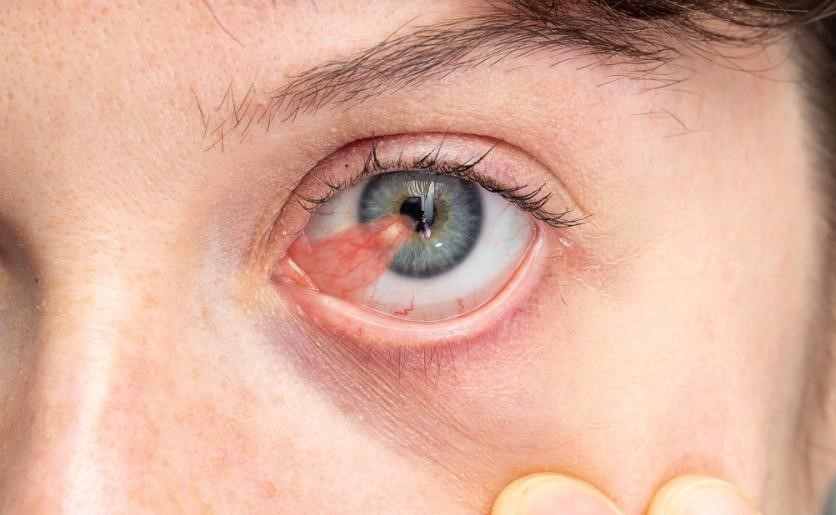News Headlines
- Aug 20 2024 What causes corneal ulcers?
- Aug 19 2024 Endophthalmitis: A Serious Eye Infection
- Aug 15 2024 Discover more about PRK eye surgery
- Aug 9 2024 Key Points you know about refractive surgeries
- Jul 28 2024 Protect yourself from dengue fever: Here's how
- Jul 28 2024 A Silent Threat, It Is Time to Action
- Mar 12 2024 Glaucoma: Early Detection, Lifelong Vision
 Pterygium: A wing-shaped growth on the eye
Pterygium: A wing-shaped growth on the eyeWhat is pterygium?
Pterygium, also known as surfer's eye, is a fleshy, wing-shaped growth that develops on the conjunctiva, the thin, clear tissue that covers the white part of the eye (sclera). It most commonly starts in the inner corner of the eye (near the nose) and grows toward the iris (the colored part of the eye). Pterygium can affect one or both eyes.
Symptoms of pterygium
Pterygium may not cause any symptoms at first. However, as it grows, it can cause:
* Redness and irritation of the eye
* Dry, itchy, burning eyes
* A feeling of something in the eye
* Blurred vision (if the pterygium grows large enough to cover the cornea)
Causes of pterygium
The exact cause of pterygium is unknown, but it is thought to be caused by a combination of factors, including:
* Ultraviolet (UV) light exposure: Long-term exposure to UV light from the sun, especially reflected UV light from water, sand, and snow, is a major risk factor for pterygium.
* Dry eyes: Dry eyes can also increase the risk of pterygium.
* Dust and wind: Exposure to dust and wind can irritate the conjunctiva and make it more likely to develop pterygium.
* Other factors: Other factors that may increase the risk of pterygium include living in hot, dry climates, having a family history of pterygium, and using certain medications.
Prevention of pterygium
The following can help prevent pterygium:
* Wear UV-blocking sunglasses: Wear UV-blocking sunglasses that block both UVA and UVB rays when you are outdoors.
* Protect your eyes from dust and wind: Wear protective eyewear, such as goggles, when you are in dusty or windy environments.
* Keep your eyes hydrated: Use artificial tears or other lubricants to keep your eyes moist.
Treatment of pterygium
There is no cure for pterygium, but there are treatments that can help relieve symptoms and prevent the growth from worsening. Treatment options include:
* Artificial tears: Artificial tears can help relieve dryness and irritation.
* Anti-inflammatory eye drops: Anti-inflammatory eye drops can help reduce redness and swelling.
* Surgery: If the pterygium is large or causing significant symptoms, surgery may be necessary to remove it.
Recurrence of pterygium
Pterygium can recur after surgery, especially if the person continues to be exposed to UV light and other risk factors.
See an Ophthalmologist if you experience any of the symptoms of pterygium, especially if the symptoms are severe or are affecting your vision. Early diagnosis and treatment can help prevent the growth from worsening and causing vision problems.
- Please select news categories.
